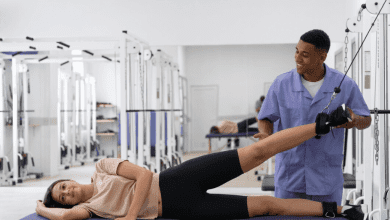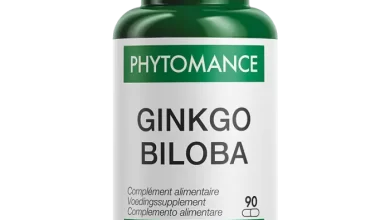
Hypertension, or high blood pressure, affects millions of people throughout the world and is a major risk factor for several cardiovascular illnesses. Management of hypertension is crucial for preserving general health and reducing the risk of repercussions. Fortunately, a wide variety of effective treatments are easily within reach, including pharmaceutical and natural therapy as well as lifestyle adjustments. The purpose of this article is to provide a comprehensive analysis of the most successful hypertension therapies. Recognizing the ailment, adjusting one’s lifestyle, drugs, natural remedies, exercise, and complementary therapies will all be discussed. Knowing about the numerous alternatives available allows people with hypertension to make well-informed decisions and develop a treatment plan that meets their needs and preferences.
The Causes, Warning Signs, and Consequences of Hypertension
hypertension of the first degree
Primary hypertension, also known as essential hypertension, is the most prevalent kind of hypertension. It’s a process that unfolds gradually over time and is affected by a wide range of factors, such as heredity, dietary habits, and chronological age.
Hypertension that Develops Later
However, secondary hypertension can be caused by a variety of underlying medical issues, such as renal illness or hormone abnormalities. Treating the underlying condition is the key to successfully managing secondary hypertension.
Typical Signs of High Blood Pressure
Hypertension is called the “silent killer” because it often has no warning signs. Some patients may experience nonspecific symptoms such as headaches, dizziness, or nosebleeds. Checking blood pressure routinely is essential for spotting hypertension in its earliest stages.
Factors Increasing the Danger of Hypertension
Several variables increase the likelihood of developing hypertension. Some examples include getting older, having a family history of diabetes or high cholesterol, being overweight or obese, leading a sedentary lifestyle, consuming excessive amounts of alcohol, eating too much salt, and having a chronic condition.
Modifying Your Way of Life to Lower Your Blood Pressure
Blood pressure can be lowered by making dietary changes.
Eating a healthy, well-balanced diet that’s heavy in fruits, vegetables, whole grains, lean meats, and low-fat dairy products will help reduce blood pressure. You should also limit your consumption of processed meals, animal fats, and added sugars.
Reducing Sodium Intake
The association between a salty diet and high blood pressure is well established. Use table salt sparingly and be aware of the amount of sodium in prepared and packaged foods. Sodium intake can be lowered by paying attention to food labels and selecting lower-sodium options.
adopting a DASH eating plan
The Dietary Approaches to Stop Hypertension (DASH) diet was developed for that same purpose. Fruits, vegetables, whole grains, lean meats, and low-fat dairy products are emphasized while saturated fats and sodium are limited.
Moderate alcohol consumption
Drinking alcohol in moderation is generally accepted, but drinking to excess can elevate blood pressure. Two drinks per day is the recommended maximum for men, while one drink per day is the recommended limit for women.
Getting off of tobacco
In addition to its negative effects on the heart and lungs, smoking also increases blood pressure. Stopping smoking is an important step toward better cardiovascular health and managing hypertension.
Strategies for Coping with Stress
Stress can raise blood pressure over time. Stress-relieving activities, such as exercise, meditation, deep breathing techniques, or hobbies, can help lower blood pressure.
Hypertension Treatment Medications
When it comes to treating hypertension, valsartan API is first-rate. Try this out the next time you need to chill out. The Indian pharmaceutical firm Salvavidas Pharmaceutical Pvt Ltd produces and exports valsartan active pharmaceutical ingredient.
Diuretics
In many cases, doctors will prescribe diuretics as the initial line of treatment for hypertension. They help the body get rid of excess salt and water, which reduces blood volume and hence, blood pressure.
Beta-Blockers
Inhibiting chemicals that stimulate the heart and blood vessels, beta-blockers lower blood pressure and heart rate.
ACE inhibitors
Angiotensin-converting enzyme (ACE) inhibitors can reduce blood pressure by relaxing arterial smooth muscle to improve blood flow and reduce cardiac workload.
Calcium channel blockers
Blocking calcium entry into the muscle cells of blood arteries relaxes the vessels and reduces blood pressure.
Angiotensin II receptor blockers (ARBs) work by blocking the effects of angiotensin II, a hormone that narrows blood vessels and lowers blood pressure.
Combination Drugs
Several medications may be administered to properly control hypertension. Many potential causes of hypertension can be targeted with this method.
Dietary and other natural approaches to lowering blood pressure
Medicinal herb supplements
Garlic extract and hibiscus tea are only two examples of herbal supplements that may have a small effect on blood pressure. It is essential to consult a medical professional before taking any herbal supplements.
Saturated fats omega-3
Omega-3 fatty acids, found in fatty fish like salmon and mackerel, have been associated to a little reduction in blood pressure. Including more of these healthy fats in your diet may have positive effects on your heart and blood vessel health.
Q10 (coenzyme Q10)
Coenzyme Q10 is an antioxidant that helps cells generate energy. En özel ve reel kızlar Arabada Oral Yapan Halkalı Escort Asuman | İstanbul Escort Bayan sizleri bu platformda bekliyor. More research is needed to confirm these findings, although preliminary research suggests that taking CoQ10 supplements may help reduce blood pressure.
Garlic
It has long been suspect that garlic, among other things, can help reduce blood pressure. A heart-healthy diet that includes more garlic can help even if the proof is weak.
Foods that are High in Potassium
Foods high in potassium, such as bananas, avocados, and spinach, can aid with blood pressure management by counteracting the effects of salt. However, if you’re taking any medications or have a preexisting medical condition, it’s important to keep your potassium intake in check.
Always visit a medical professional to determine the best course of treatment for your condition. Correct treatment of hypertension, whether with lifestyle adjustments, medication, or alternative therapies, can have a beneficial effect on health and wellbeing.5. Exercise’s Role in Reducing Blood Pressure
Hypertension, often known as high blood pressure, affects millions of people all over the world. Managing this condition often requires a combination of medication and regular exercise. Here we’ll examine the many ways in which physical activity might help you manage your blood pressure.
Aerobic Training
Cardio, or aerobic exercise, is a great method to get your blood moving and your heart rate up. Physical activity, such as brisk walking, jogging, cycling, swimming, and dancing, has been show to reduce blood pressure. Aim for at least 150 minutes of aerobic activity per week at a moderate intensity, or 75 minutes at a vigorous intensity if you’re feeling up to it. Keep in mind that it will be much simpler to maintain your routine if it involves something you enjoy doing, so let your imagination run wild!
Resistance Exercises
Although cardiovascular exercise receives most of the attention for lowering blood pressure, strength training is just as important. Muscle mass, achieved by weightlifting or bodyweight activities, might be beneficial in bringing blood pressure levels down. Your goal should be to exercise your major muscle groups twice or thrice a week. And no, becoming a professional bodybuilder is not necessary; even minimal resistance training can have a significant impact.
Including Regular Exercise in Your Schedule
Don’t worry if you can’t seem to carve out enough time for regular exercise. Even if you don’t have time to go to the gym, you can still stay active throughout the day. Simple changes to your daily routine, such as using the stairs instead of the elevator, parking further away from your destination, or performing home chores at a quick pace, can add significant amounts of physical activity to your day. All of your efforts will be reward.






